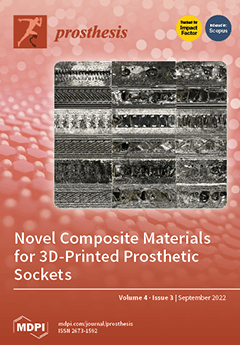The aim of this in vitro study was to investigate cytotoxic effects of dual-cure bulk-fill resin materials polymerized with a third-generation LED light-curing unit (LCU) on L929 fibroblast cells in terms of morphology and viability. Three novel dual-cure, flowable bulk-fill materials (Fill-Up!™), a
[...] Read more.
The aim of this in vitro study was to investigate cytotoxic effects of dual-cure bulk-fill resin materials polymerized with a third-generation LED light-curing unit (LCU) on L929 fibroblast cells in terms of morphology and viability. Three novel dual-cure, flowable bulk-fill materials (Fill-Up!™), a bioactive material (ACTIVA™ BioACTIVE-RESTORATIVE™), and a dual-cure bulk-fill composite material (HyperFIL
® HAp) polymerized by LED LCU (VALO™ Cordless) were tested. Each material was placed in plastic rings (4 mm × 5 mm) in a single layer. Unpolymerized rings filled with each material were placed in direct contact with cells and then polymerized. After polymerization, the removed medium was readded to wells. In this study, four control groups were performed: the medium-free control group, medium control group, physical control group, and light applied control group. Three samples were prepared from each group. After 24 h, the morphology of cells was examined and a WST-1 test was performed. The percentage of cell viability (PCV) of each group was calculated. The experiment was repeated three times. Data were analyzed by a Kruskal–Wallis Test and a Mann–Whitney U test.
p < 0.05 was considered significant. The PCV of all groups were found to be significantly lower than the medium control group (
p < 0.05). The lowest PCV was obtained in HyperFIL
® Hap, while highest was in the Fill-Up!™. In the morphology of cells related to the experimental groups, it was observed that the spindle structures of cells were disrupted due to cytotoxicity; cells became rounded and intercellular space increased. There were no significant differences between the control groups (
p > 0.05). All control groups showed acceptable PCV (>70%) and cells were spindle-like, similar to the original fibroblast cells. It can be suggested that clinicians should pay attention when applying dual-cure bulk-fill materials in deep cavities, or they should use a liner material under these materials.
Full article





